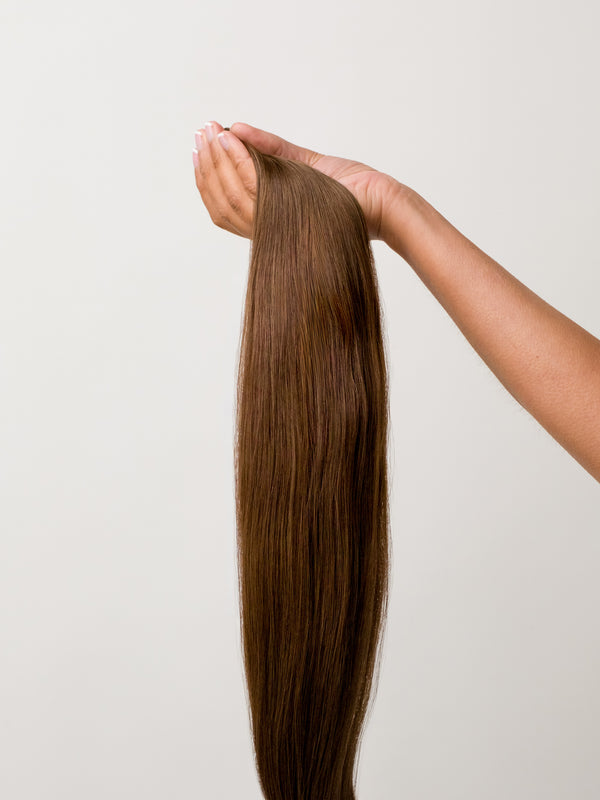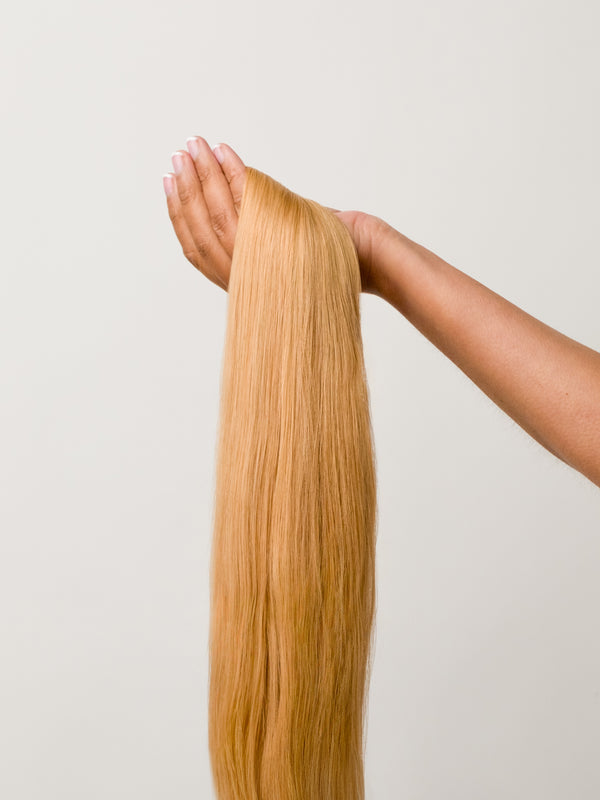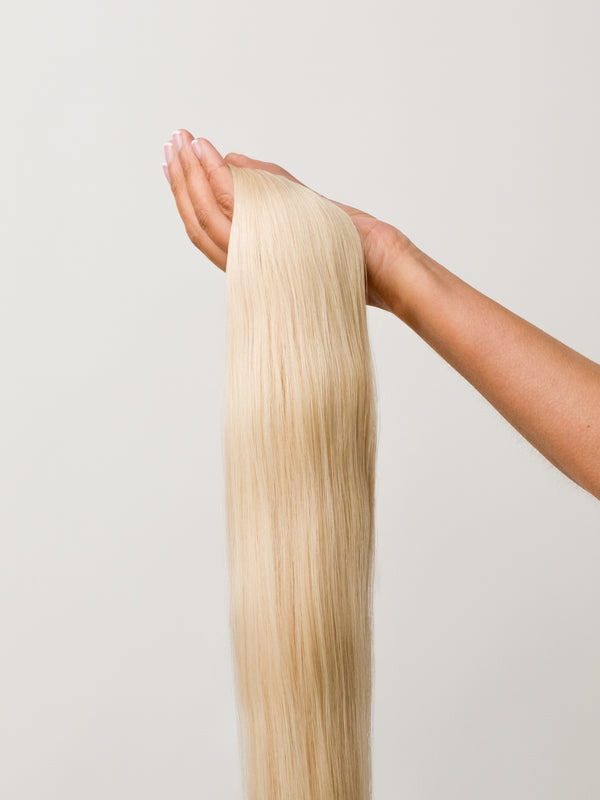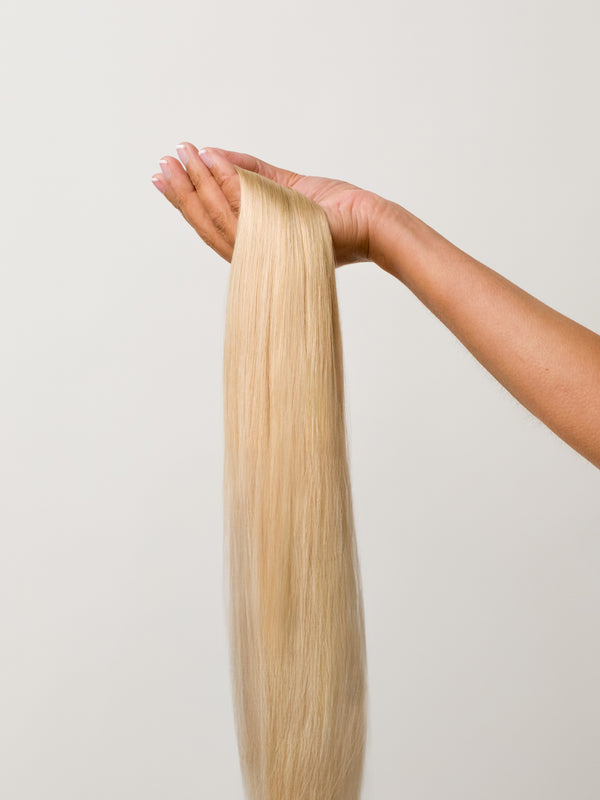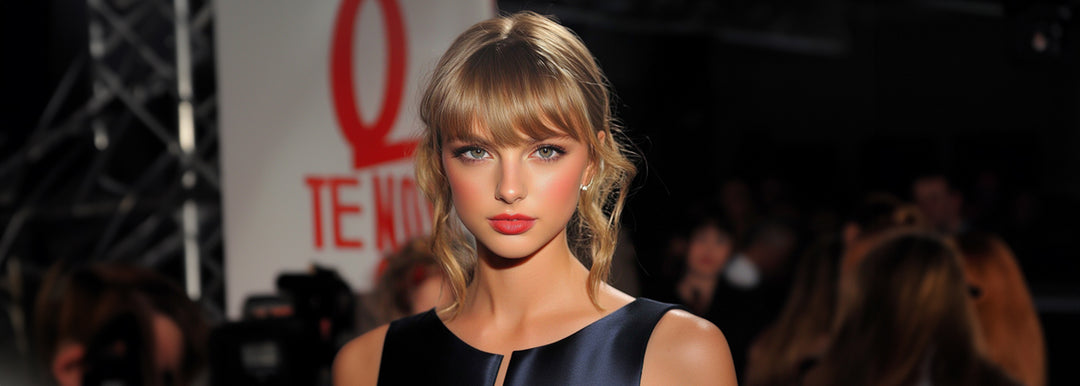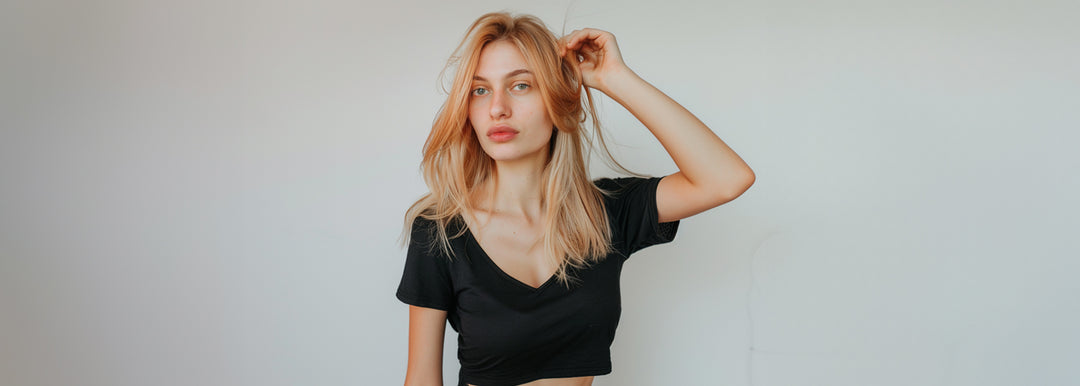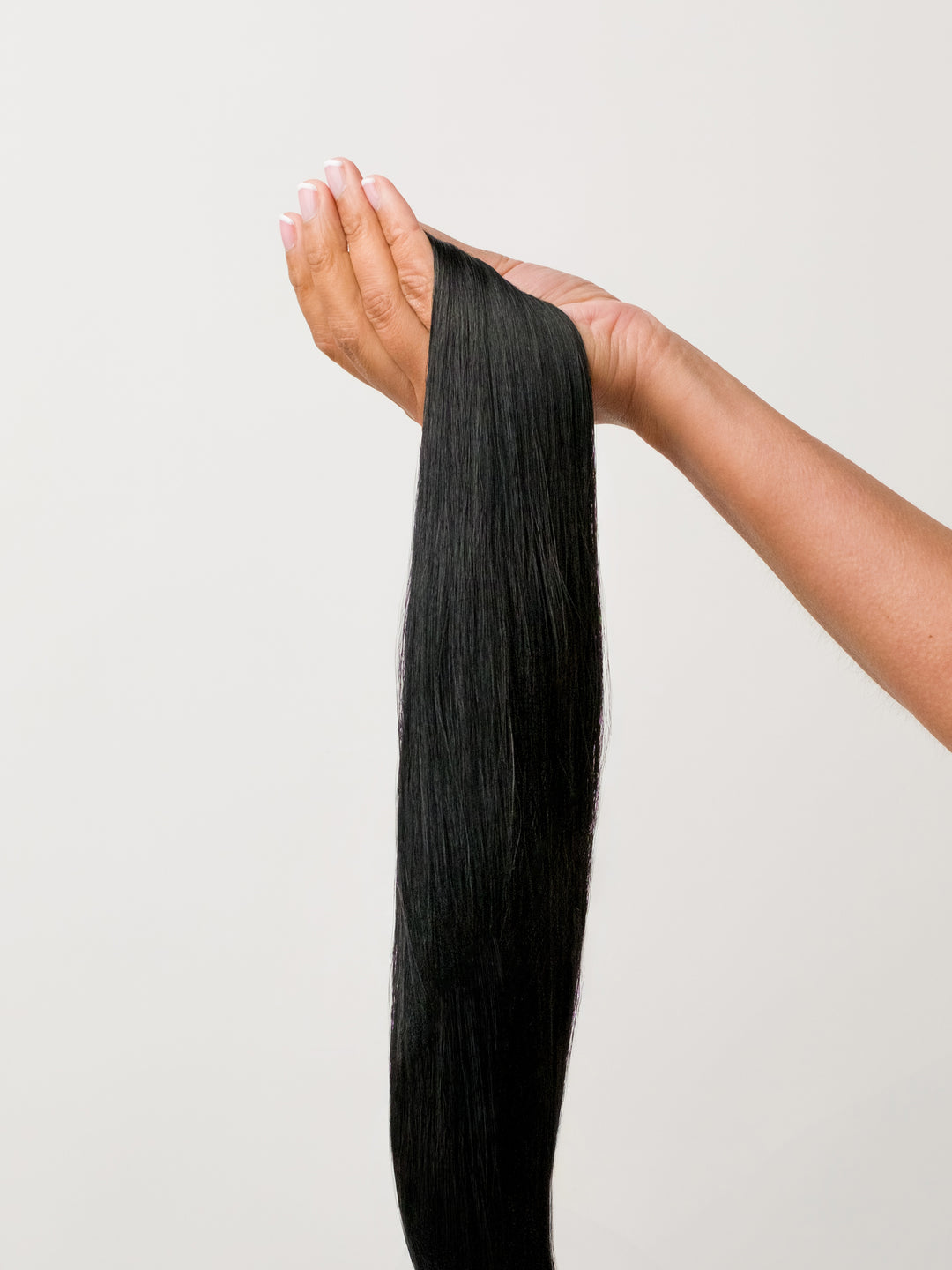When those sunny summer days finally roll around, we're all itching to take a dip in the pool or ocean to beat the heat, right? But if you've got hair extensions, the simple question of "How often should I wash my hair?" gets a little trickier.
See, the ideal washing schedule really depends on the type of extensions you have, as well as how active and sweaty you tend to get on a daily basis. Wash too little, and you'll start seeing product buildup that leaves your locks looking flat and dull - not a good look. But wash too frequently, and you risk drying out those gorgeous extensions way before their time.
This guide breaks down all the details you need for washing your extensions. It lays out a clear washing routine and shares essential care advice. Follow these tips, and your extensions will stay gorgeous while protecting the health of your natural hair.
What You Will Learn
-
Different extension types need different washing schedules
-
Your hair type and lifestyle affect how often to wash
-
We'll explain the ideal washing frequency for your situation
-
Certain factors determine the right washing balance
-
We'll guide you through proper extension washing technique
-
Using the right technique helps extensions last longer
-
We'll recommend safe products for extensions and natural hair
-
The wrong products can damage extensions and real hair

When it comes to how often you should wash your hair extensions, there are several important factors to consider. These factors directly impact the health, lifespan, and overall look of your extensions. Let's take a closer look at each one:
Hair Extension Type
It really depends on the type of hair extensions you're wearing when it comes to how often you need to wash them. If you're just clipping in some temporary extensions for a night out or special occasion, you can get away with washing them less frequently since you're only wearing them for a short time.
But if you've gone for the more permanent extension options like the tape-in, sew-in, or keratin bonded kinds, those are attached to your real hair for weeks or months at a time. Since they're essentially part of your own hair during that period, you'll need to wash and care for them just as often as you do your natural locks. Those semi-permanent or permanent extensions are along for the full ride with your bio hair until you get them removed or replaced.
Lifestyle and Activity
How often you need to wash your hair extensions depends on your daily activities and surroundings. If you lead an active lifestyle, exercise frequently, or work in a dirty environment, you'll need to wash your extensions more often. Things like air pollution, humidity, or exposure to chlorinated water from swimming pools can also make your extensions get dirty faster. Pay attention to your routine and environment, and adjust how frequently you wash your extensions accordingly.
Scalp Health
The condition of your scalp and natural hair can impact how often you need to wash your hair extensions. If you have an oily scalp or dandruff, the excess oils and flakes can transfer onto the extensions, making them get dirty faster. In these cases, you'll likely need to wash your extensions more frequently to keep them clean and fresh.
Changes in Season
The weather plays a role in how frequently you'll need to wash those extensions. When it's hot and humid out, you'll probably find yourself washing more often. But during the colder, drier months, you can go a little longer between washes.
Styling Products
Using styling products can cause buildup on your natural hair and extensions. If you regularly use heavy products, you'll likely need to wash your extensions more often. This helps keep them looking fresh and revived.
Types of Hair Extensions
Shop Roxy Hair
Avoiding daily washing isn't just about protecting your extensions and your own natural hair. Most people delay washing for an extra day or two because the drying and washing process takes longer with extensions. Dry shampoo becomes your new bestie - it removes oil and grease from the roots, leaving your hair looking clean and fresh for another day.
Tape Hair Extensions
Daily washing is a no-go with tape-in extensions. Stick to washing them no more than three times a week - twice is even better. Frequent wetting loosens the bonds, causing slippage. It also dries out your lovely real human hair faster, shortening their lifespan. Save the daily wash for when you're extension-free.
Nano Ring and Micro Ring Hair Extensions
With nano-ring hair extensions, you generally only need to wash your hair 1-2 times per week, just like tape-in extensions. However, if you feel like there's a lot of product buildup or if it's been an especially warm week, you can wash it up to 3 times per week maximum.
Weave Hair Extensions
Weaves take time to dry and are tricky to wash, so most people prefer washing them only once a week. If your natural hair feels greasy in between, use dry shampoo or wash just the top area separately. After washing, make sure to fully dry the tracks, roots of your weave, and your own hair to prevent any mildew buildup in the weft.
Clip in Hair Extensions
Clip-in extensions don't need as much washing since you don't wear them all the time like permanent ones. They don't get as greasy from your scalp's natural oils. Generally, wash clip-ins every 12-15 wears or 2-3 times a week. But if they're super tangled, hard to manage, or have product buildup, wash them sooner. Check our blog post for details on how to properly wash clip-in extensions.
The Washing Technique

When you wash hair extensions like permanent hair extensions, it requires a gentle touch and the right technique. Here's a step-by-step guide to keep those luscious locks looking their best.
-
First things first, give your extensions a good brush before getting them wet. This prevents tangles and knots from forming during the wash. Use a wide-tooth comb or soft-bristle brush, starting from the bottom and working your way up.
-
Next up, it's time to shampoo. If washing clip-ins, wet the wefts in a clean sink with lukewarm water. Opt for a sulfate-free shampoo and gently lather it through, avoiding harsh scrubbing, especially near the bonds or clips.
-
After rinsing, apply a sulfate-free conditioner from mid-length to ends, steering clear of the roots and bonds. Leave it on for 5 to 10 minutes, then rinse thoroughly.
-
For an extra nourishing boost, treat your tresses to a hair mask once or twice a month. If you've got clip-ins, you can even leave the wefts in a shower cap overnight to let the mask work its magic.
-
Once you've rinsed everything out, it's time to get your extensions air dry. Gently squeeze out excess water and let your hair air dry. If you're in a hurry, use a microfiber towel to speed things up, but avoid excessive rubbing.
-
If blow-drying, always use a heat protectant spray and keep the setting on cool. Start at the roots and work your way down, drying in a downward motion to minimize frizz.
-
Finally, gently brush or comb your dry extensions, starting from the bottom and working up. Now you're ready to style as desired, using the right tools and products for your extension type.
Maintaining Your Extensions Between Washes

Regular washing is essential, but you can keep extensions looking fresh between shampoos. A few handy tricks can help.
Dry shampoo is a lifesaver when you need to extend time between washes. Use one made for extensions and spritz it directly on roots, gently massaging to absorb hair oil and buildup. Avoid over-applying on mid-lengths and ends.
Co-washing, or conditioner-only washing, gently refreshes extensions without stripping moisture. Wet hair, apply a bit of conditioner, work it through lengths, then rinse thoroughly. It removes light buildup while nourishing.
Leave-in conditioning sprays or dry shampoo mists made for extensions can revive locks between washes with moisture, shine, and a fresh scent. Mist mid-lengths to ends, avoiding roots and bonds.
What Products NOT to Use on Your Hair Extensions
Just as important as using the right products for healthy extensions is avoiding the wrong ones. As covered earlier, skip anything with sulfates to prevent dryness.
You'll also want to avoid strengthening or keratin-building products altogether. The protein in these can actually make extensions more brittle, leading to damage instead of stronger, healthier locks. Use moisture-rich, professional salon products instead of strengthening treatments.
Beyond sulfate-free, also avoid ingredients like dimethicone, certain quaterniums, sodium hydroxide, Moroccan oil, coconut oil, and silicone-based products. This list keeps changing, so check with your stylist before using any new product on your extensions to ensure it's safe.
Extensions Safe-Care Products

When it comes to hair extensions, they don't receive the same nourishment and natural oils as hair growing from your scalp. Add to that the fact that most extensions undergo chemical processing (unless you splurge on virgin hair), and you've got a recipe for dryness. That's why choosing the right products for your extensions is crucial.
You'll want to steer clear of harsh ingredients that can further strip moisture from the hair. Instead, look for products that help replenish hydration and keep those strands soft and supple. Regular haircare products often contain harsh ingredients like sulfates, alcohol, and silicones that can dry out, tangle, and cause excessive shedding in hair extensions.
Extension-safe products are specially formulated to be gentle yet effective. These products typically:
-
Are sulfate-free to prevent dryness and breakage
-
Lack alcohol to maintain moisture levels
-
Use lightweight silicones or are silicone-free to avoid product buildup
-
Products are packed with nourishing oils and butters that help condition and moisturize your hair extensions.
-
Have a gentle, low-lather or no-lather formula designed to minimize tangles and knots when washing your extensions.
Common Extension Issues and Solutions
These days, tons of people are rocking hair extensions to get that long, lush look. But let's be real – extensions can be high maintenance. Whether you've got clippies, tape-ins, or a full weave, you're bound to run into some issues from time to time. No need to panic though! Here are some common extension problems and how to deal with them like a pro:
Shedding
Hair extensions can shed like crazy if you cheap out on quality or don't take proper care of them. To keep your luscious locks intact, splurge on 100% human hair extensions and get them installed by a pro stylist who knows what they're doing. Once they're in, be gentle - no aggressive brushing or yanking. Use the right detangling tools and avoid any harsh pulling or tugging that could loosen those precious strands.
Tangling
Extensions tangle like nobody's business if you're not careful. But no need to go full Rapunzel - invest in the right tools and products to keep that mane smooth. A good wide-tooth comb or extension brush makes detangling way easier without ripping strands out. Take it slow, section by section from the ends up. Never sleep with wet extensions unless you want a nightmare knot situation. And use a good leave-in conditioner or detangler to keep strands slippery and knot-free when you style.
Breakage
Extensions can turn into a hot mess if you're not careful. Too much heat styling, cheap synthetic hair, or a sketchy install job - any of those can lead to major breakage. But you can prevent those stringy strands with a few simple tips: Go easy on the flat irons and blow dryers, and use a thermal protectant when you just gotta have that sleek look. Splurge on 100% human hair extensions - the real deal is way stronger. And get those locks put in by an experienced pro who knows what they're doing.
Scalp Irritation
Hair extensions can be amazing for achieving fuller, longer locks, but sometimes they can lead to an irritated scalp. This usually happens due to two main reasons - excessive tension or friction on your scalp.
When extensions are installed too tightly or with too much tension, it can put a lot of pressure on your scalp and cause discomfort over time. Similarly, the attachment points where the extensions are secured can rub against your scalp, leading to irritation from friction.
To avoid these issues, it's important to select extensions that feel comfortable and not overly tight or heavy on your head. During installation, communicate with your stylist if anything feels too taut or painful
Color Fading
Having vibrant, beautifully colored hair extensions is a great way to switch up your look. However, like regular hair, extensions can be prone to color fading over time. There are a few common culprits behind this fading.
One is exposure to direct sunlight. The UV rays from the sun can cause the color molecules in the hair to break down and fade faster. Another factor is using shampoos or haircare products with harsh chemicals like sulfates, which can strip away the hair's color.
Additionally, if low-quality hair dyes or dye jobs are used initially, the color simply won't last as long before fading or looking dull.
To help your colored extensions retain their vibrancy for longer, there are some easy preventative steps you can take. Try to limit their direct exposure to sunlight when possible, and use a sulfate-free, color-safe shampoo and conditioner formulated for color-treated hair.
When it's time to dye or refresh the color, opt for high-quality, ammonia-free hair dyes from reputable brands. Avoid any harsh chemicals or bleaching treatments that could further damage and fade the hair.
Summary
Okay, so hair extension care might have seemed like a bit of a headache at first, but this guide has hopefully made it feel way more manageable.
We covered all the key things you need to know - from figuring out exactly what type of extensions you have, to nailing down when and how to wash extensions properly. We even went over some common issues like tangling or shedding, and how to tackle those hassles head-on.
Now you've got all the insider tips and tricks to care for those luscious locks like a total pro. With the right routine down pat, your extensions are gonna look amazing and last so much longer.
Just keep in mind, a little TLC goes a long way with extensions.
Looking for more hair extension tips? Check out our other blog posts for additional guidance.
Frequently Asked Questions
How to wash hair with extensions?
Use lukewarm water, sulfate-free shampoo, and be gentle near the bonds or clips.
How often should you wash your hair if you have hair extensions?
You should wash your hair extensions 2-3 times a week.
Can I use regular shampoo and conditioner on my hair extensions?
No, it's best to use a gentle shampoo and conditioner for your hair extensions.
Should I wash extensions in the shower or sink?
Washing in a sink or tub is better than the shower to prevent excess tangling and matting from water pressure.






